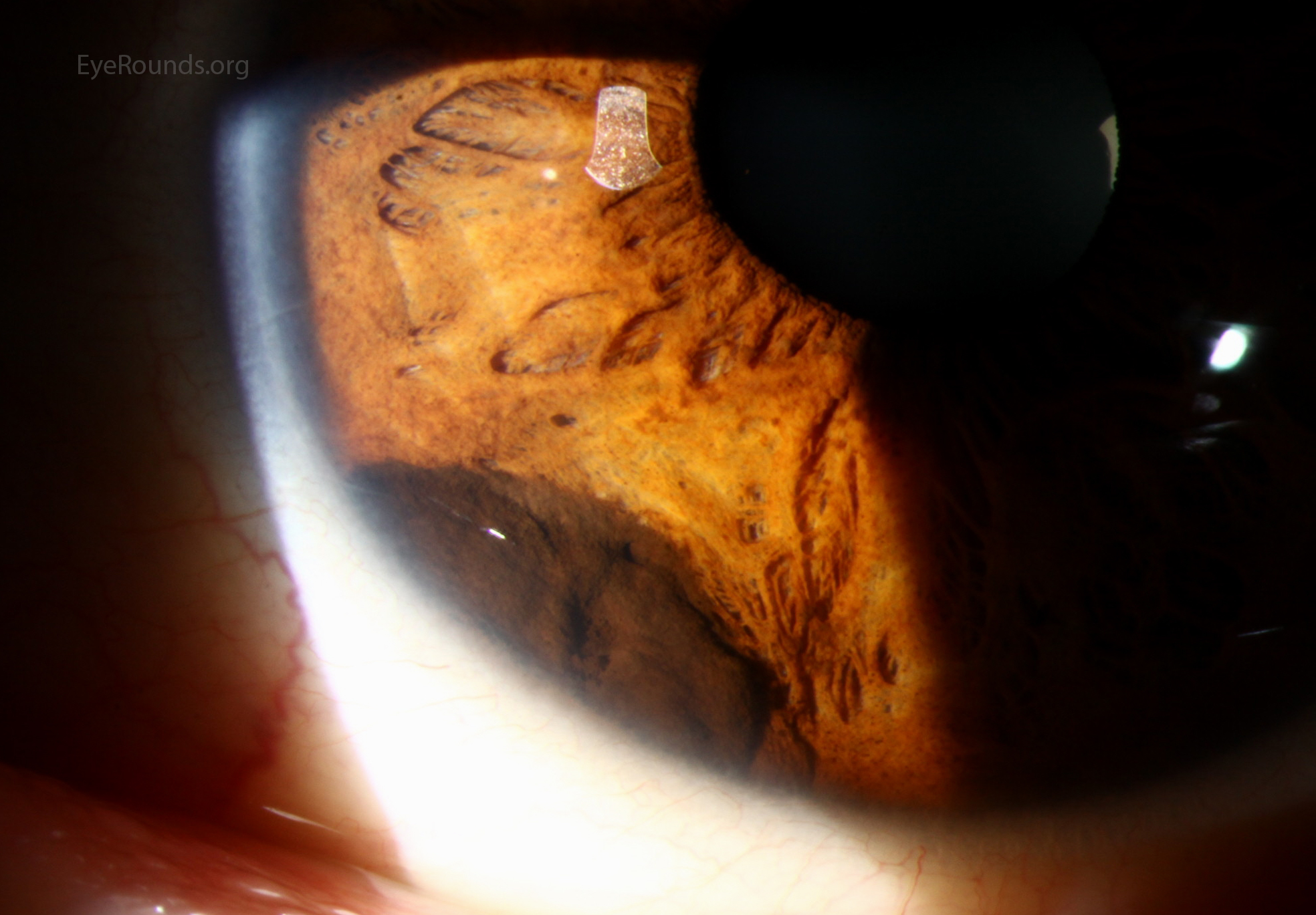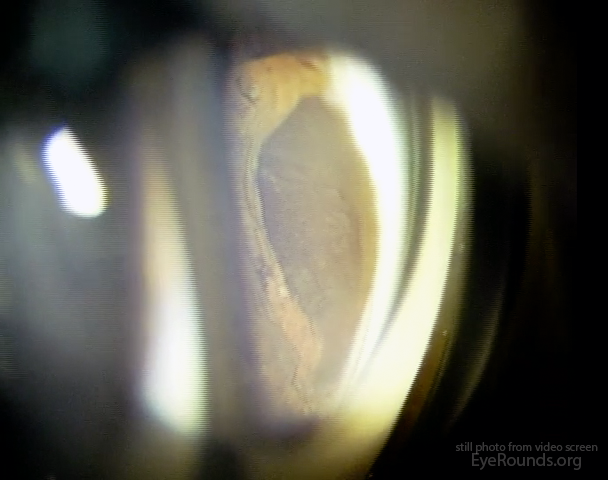
A melanocytoma is a specific type of uveal tract nevus, termed "magnocellular nevus", characterized clinically by its jet-black coloration and histologically by its heavily pigmented, large, polygonal, bland cells. Clinically, melanocytomas most often present as asymptomatic pigmented lesions.
Melanocytomas can occur anywhere along the uveal tract, but are most commonly found in the juxtapapillary region of the choroid (see related links).
Traditionally viewed as benign lesions, transformation into a malignant melanoma can occur. Malignant transformation rates for choroidal melanocytomas have been reported at 2%.(1)



Ophthalmic Atlas Images by EyeRounds.org, The University of Iowa are licensed under a Creative Commons Attribution-NonCommercial-NoDerivs 3.0 Unported License.